In the competitive landscape of law firms, optimizing your billing rate is crucial to ensure success and growth. The optimal billing rate refers to the rate you charge your clients for legal services you provide. It includes expertise, market demand, client expectations, and profitability. By setting an optimal billing rate, law firms can enhance their financial performance and strengthen their position in the market.
Experts at Law 2.0 Conference explored the significant benefits of optimizing billing rates. They also discussed the challenges associated with this process and provided insights into effective mediums through which law firms can successfully optimize their billing rates.
Law 2.0 Conference Discusses Major Benefits Of Optimizing Billing Rates
There are five major benefits that law firms can reap by optimizing their billing rates:
- Increased Revenue
Optimizing your billing rate ensures you charge an amount accurately reflecting the value you provide to clients. Doing so can maximize your revenue potential and avoid wasting money. In addition, this allows you to monetize your expertise and skills effectively. Experts at attorney events have spoken about this being a significant force behind the need to optimize billing rates.
- Enhanced Client Perception
When your billing rate is aligned with the value you deliver, it boosts your credibility and reputation in clients' eyes. They perceive you as a professional who offers high-quality services, which fosters trust and strengthens client relationships.
- Attracting High-Value Clients
A well-optimized billing rate allows you to attract clients who are willing to pay for quality legal services. In addition, by charging a rate that reflects your value, you position yourself as a trusted advisor and attract clients seeking superior legal representation.
- Competitive Advantage
When your billing rate is optimized, it gives you a competitive edge in the market. It lets you to stand apart from competitors by positioning your firm as delivering exceptional value. Clients tend to choose you over competitors who may charge lower rates but provide low-quality services.
- Sustainable Growth
By optimizing your billing rates, you lay the foundation for sustainable growth. It ensures you have a healthy financial base to invest in talent, technology, and other resources necessary for long-term success. This, in turn, enables you to expand your firm, take on more lucrative opportunities, and secure a prosperous future.
Common Mediums Helping Optimize Billing Rates
Law firms can utilize various mediums to optimize their billing rates to achieve these benefits. Here are five major approaches:
- Market Research
Conducting thorough market research becomes vital to comprehensively understanding prevailing rates within your practice areas and geographical regions.
This research is a benchmark. It allows you to evaluate the competitive landscape. It helps identify pricing trends and make informed decisions when setting billing rates. Experts at the international lawyers' summit have reviewed this as a primary optimization medium.
- Value-Based Pricing
Moving beyond the traditional billable hours model, adopting a value-based pricing approach involves assessing the unique value you deliver to clients. By considering factors such as the complexity of the legal matter, the potential impact on the client's business, and the desired outcomes, you can establish pricing structures that reflect the value received rather than solely relying on the time spent on the case.
- Client Segmentation
Segmentation of your client base helps tailor billing rates to specific client segments based on factors like industry, size, and profitability. By understanding the unique needs, expectations, and willingness to pay different client segments, you can customize your billing rates accordingly, optimizing revenue while ensuring clients perceive the pricing as fair and aligned with the value they receive.
- Alternative Fee Arrangements
Offering alternative fee arrangements provides flexibility in pricing structures beyond traditional hourly rates. For example, fixed fees, contingency-based billing, or blended fee structures can appeal to clients seeking predictable costs, shared risks, or specific budgetary considerations.
Alternative fee arrangements can enhance competitiveness, attract clients, and create mutually beneficial pricing models. Global law conferences, notably in the USA, have extensively reviewed this.
- Technology Adoption
Leveraging technology solutions to streamline billing processes can greatly optimize your billing rates. Implementing time tracking, billing, and project management software enables accurate and efficient recording of billable hours, automates invoicing processes, and ensures consistency in applying billing rates across your firm. Technology adoption increases accuracy, reduces administrative overhead, and enhances overall billing efficiency.
Challenges Faced During Billing Rate Optimization
While optimizing billing rates offer significant advantages, it has its fair share of challenges. Here are five key challenges law firms may encounter:
- Market Volatility
Fluctuations in the market, including economic shifts and changes in client demands, can pose challenges in setting and maintaining optimal billing rates. It requires constant vigilance and adaptability to monitor market trends, assess their impact on your firm's financial performance, and adjust your rates accordingly.
- Client Resistance
Clients may resist higher billing rates, particularly if they have been accustomed to lower rates or face budgetary constraints. Therefore, effectively managing client expectations becomes crucial in such situations, as you need to communicate the value you provide and justify the rates to maintain client satisfaction and retention.
- Internal Alignment
Achieving consensus among partners and attorneys within your firm regarding billing rates can be complex. Balancing diverse perspectives, managing competing interests, and ensuring transparent discussions are necessary to establish a unified approach to setting rates that align with the firm's financial goals and value proposition. For instance, to boost transparency, Law 2.0 Conference also guides people on the scammers’ tactics and strategies through its fraud monitoring page to protect them from facing any financial losses.
- Competitor Response
Adjusting billing rates can trigger responses from competitors, potentially leading to price wars or the loss of clients. Therefore, understanding the competitive landscape and differentiating your firm based on the value you offer becomes critical to withstand any competitive pressures that may arise.
- Ethical Considerations
Billing rates must comply with legal and ethical guidelines that govern the legal profession. Maintaining your professional reputation and integrity is essential to uphold transparency, fairness, and accuracy in billing practices. Adhering to these ethical considerations while optimizing your rates requires a meticulous approach to billing and invoicing processes.
How Have Emerging Technologies Affected Billing Rate Optimization?
Integrating AI and ML technologies in the law industry is revolutionizing billing rate optimization for firms. These advanced technologies offer numerous benefits, enhancing accuracy, efficiency, and overall effectiveness in the billing process.
By analyzing extensive data, including historical billing information, case details, and client profiles, AI and ML algorithms identify patterns and insights crucial for optimizing billing rates. As a result, these technologies enable a deeper understanding of client needs. Global law conferences, notably in the USA, have also reviewed its impact on legal matter complexity and the corresponding effort required for optimal results.
Automation of time tracking and invoice generation is another significant advantage of AI and ML. Traditionally, manual recording of billable hours was time-consuming and prone to human error. AI-powered tools automate time tracking, ensuring accurate billing. Lawyers can then focus on core legal responsibilities while billing accuracy improves significantly.
ML algorithms analyze historical billing data, identifying patterns and factors influencing profitability. This insight empowers firms to make informed decisions when setting billing rates for new cases. By applying predictive analytics to historical data, firms can effectively price services, considering case-specific circumstances and complexity.
Value-based pricing models can be adopted with AI and ML technologies. These models account for the value delivered to clients, moving away from relying solely on billable hours. Instead, firms can establish more accurate and equitable billing rates by assessing client needs, potential impact, and desired outcomes.
Law firms can effectively deal with the challenges of optimizing billing rates by implementing the following strategies:
- Clear Communication And Client Education
Overcoming client resistance requires open and transparent communication. Law firms should clearly articulate the value they provide and the reasons behind their billing rates. In addition, educating clients about the complexities of legal services, the expertise required, and the potential outcomes helps establish trust and understanding. Any gaps in communication with the clients give space for the scammers to take advantage of the situation. To avoid such miscommunications, Law 2.0 Conference has dedicated pages to let people report any such scam and spam offenses.
- Collaboration And Consensus Building
Internal alignment among partners and attorneys is essential for optimizing billing rates. Therefore, firms should foster a collaborative environment where all stakeholders can contribute their perspectives and insights. By involving key decision-makers in discussions and seeking consensus, firms can establish a unified approach that aligns with the firm's financial goals and value proposition.
- Continuous Market Analysis And Adaptation
Law firms must engage in continuous market analysis to navigate market volatility and competitor responses. Staying updated on industry trends, benchmarking against competitors, and monitoring client demands allows firms to make informed adjustments to their billing rates. Adaptability and responsiveness to market dynamics ensure that firms remain competitive while maintaining profitability and client satisfaction.
Conclusion
Optimizing your billing rate is a critical aspect of financial management for law firms, and it holds immense potential for transforming their financial performance. By strategically aligning pricing strategies with the value delivered, law firms can unlock a range of benefits.
Optimizing billing rates is not just about financial gain; it is about building lasting client relationships, fostering trust, and positioning your firm as a leader in the industry. By embracing these strategies and taking advantage of technological advancements, law firms can pave the way for sustainable growth, operational efficiency, and continued success in the dynamic landscape of the legal profession.
Join Law 2.0 Conference, an upcoming law conference in the USA, in seizing the opportunity to learn emerging trends and perspectives in the law industry by enrolling today!

-01.svg)







